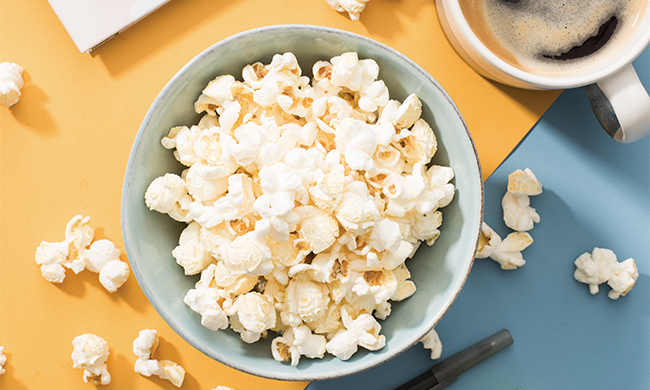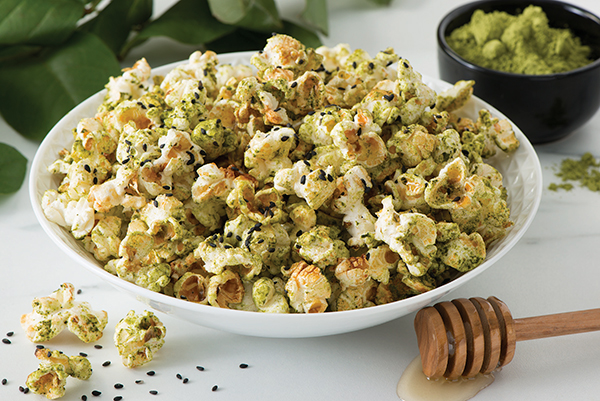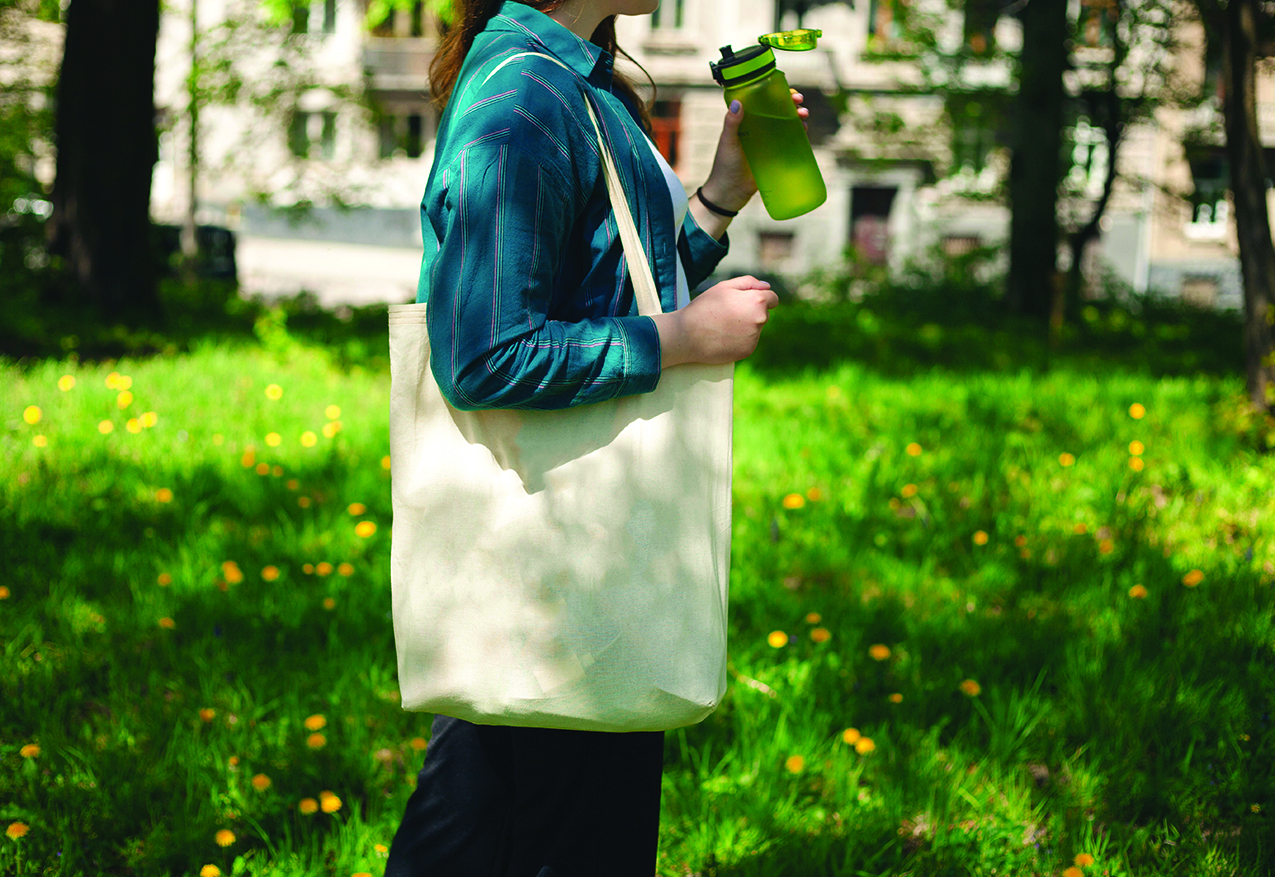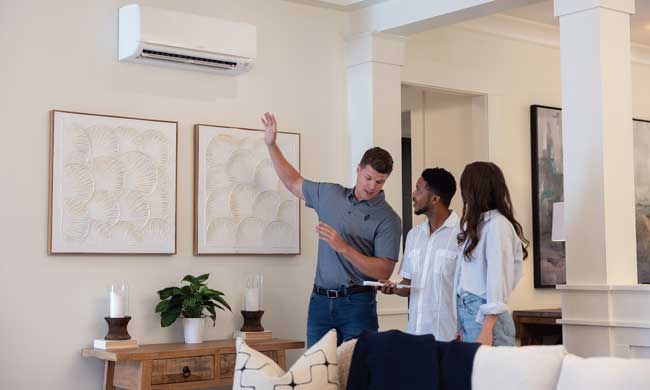HEALTHY LIVING
Snack hacks that really pop

(Family Features) If spending more time at home than usual has you reaching for snacks more often, keep some quick, flavorful options on-hand to help fuel you and your family throughout the day when hunger pangs strike.
One versatile pantry staple that can fit a variety of snack cravings: popcorn. With no artificial additives or preservatives, light and airy popcorn is naturally low in fat and calories, non-GMO and gluten free, making it a sensible option to enjoy one handful at a time or sprinkled with seasonings that satisfy your taste buds. A whole-grain food, popcorn has energy-producing carbohydrates and fiber, which can help keep you satisfied longer. Plus, it’s simple enough to make that kids can help in the kitchen by popping it themselves or adding toppings.
Whether you’re craving something sweet, salty, spicy – or nearly anything else – freshly popped popcorn can serve as the perfect base ingredient to simply mix in your favorite toppings or create more unique tastes by combining a variety of herbs and spices. For example, consider these hacks to add easy flavor:
- Pop it on the stove. Stovetop popping allows you to choose your toppings. Cover the bottom of a pot with a thin layer of oil and popcorn kernels, shake to coat, cover with a lid then turn on the heat. Once popping has slowed to 2-second intervals, remove from heat and add toppings.
- Add some sweetness. When you’re in the mood for something sweet, add a dash of salt and a pinch of sugar (or more to meet your taste) to a bowl of popcorn. Or add sugar to the pan before it’s popped, like this recipe for Sugar Corn.
- Melt some butter. For a classic taste treat, melt a little butter and pour over your bowl of popped corn.
- Satisfy multiple cravings. Pop a large pot of popcorn and divide it in half; top one half with sweeter toppings like honey, which is a key ingredient in Honey Matcha Popcorn, and the other with something savory, like nutritional yeast or dill. When hunger strikes, you’re ready, regardless of the flavor craving.
- Spice it up. Cayenne pepper and a blend of other spices can be sprinkled on popcorn to create a spicier snack like Cajun Corn.
- Add mix-ins. Add dried fruits, nuts or candies to a bowl of popcorn to make your own trail mix.
- Cheese, please. A sprinkle of Parmesan cheese can make your snack a bit more substantial. Mix in some dried herbs like basil and parsley to create this Popcorn Con Pesto.
For more snack ideas that deliver on both flavor and nutrition, visit popcorn.org.

Sugar Corn
Yield: 8 cups
- 1/4 cup vegetable oil, for popping
- 1/2 cup popcorn kernels
- 1 pinch white sugar, plus additional, to taste
- In medium pan, heat oil until hot.
- Add popcorn to pan and sprinkle sugar over it. Add more sugar, if desired, to taste.
- Cover and shake pan continuously until popcorn is popped.

Honey Matcha Popcorn
Yield: 12 cups
- 12 cups unsalted, unbuttered popped popcorn
- 1/4 cup butter
- 1/4 cup honey
- 1 teaspoon matcha green tea powder
- 1/2 teaspoon salt
- 1 tablespoon black sesame seeds
- Preheat oven to 300 F.
- Line large, rimmed baking sheet with parchment paper. Place popped popcorn in large mixing bowl.
- In small saucepan over medium heat, melt together butter, honey, matcha powder and salt, stirring until dissolved. Pour over popcorn; toss to combine. Spread onto baking sheet. Sprinkle with sesame seeds.
- Bake, stirring occasionally, 25-30 minutes, or until popcorn is dry. Let cool completely before serving.
Tip: Matcha powder can be found in the tea and coffee aisle at supermarkets.

Popcorn Con Pesto
Yield: 5 quarts
- 5 quarts popped popcorn
- 1/2 cup butter
- 1 tablespoon dried basil leaves, crushed
- 1 teaspoon dried parsley, crushed
- 1 teaspoon garlic powder
- 1/3 cup Parmesan cheese
- 1/2 cup pine nuts (optional)
- Place popped popcorn in large bowl and keep warm.
- In small saucepan, melt butter; add basil, parsley, garlic, Parmesan cheese and nuts, if using.
- Stir to blend.
- Pour over popped popcorn, stirring well.
Note: Dried thyme or oregano, or combination of ingredients, may be used in place of basil.

Cajun Corn
Yield: 2 1/2 quarts
- 1/4 cup butter, melted
- 2 1/2 quarts popped popcorn, warm
- 1 teaspoon paprika
- 1/2 teaspoon onion powder
- 1/2 teaspoon garlic powder
- 1/4 teaspoon cayenne pepper
- 1 teaspoon lemon pepper
- Heat oven to 300° F.
- In bowl, pour butter over warm popcorn.
- In separate bowl, combine paprika, onion powder, garlic powder, cayenne pepper and lemon pepper; sprinkle over popcorn. Toss to mix.
- Bake 5-10 minutes for crispy popcorn.
SOURCE:
Popcorn Board
HEALTHY LIVING
What does 100% grass-fed organic dairy bring to your table

(Family Features) It’s no secret that many grocery store dairy sections are filled with more options today. One choice continuing to gain favor with consumers is 100% grass-fed organic dairy. Nutrition, environmental awareness and animal care are some of the leading reasons consumers choose grass-fed dairy products.
Globally, the 100% grass-fed dairy market is projected to continue growing and some market experts predict annual growth rates as high as 22%. If you’re curious about 100% grass-fed organic dairy, consider these benefits from Maple Hill, America’s original 100% grass-fed organic dairy producer. The pioneer of 100% grass-fed organic dairy took its commitment a step further by celebrating and declaring National 100% Grass-Fed Organic Dairy Day on April 15, which recognizes the positive impact it has on consumers, cows, farmers and the environment.
1. Honoring the Farmers
Unlike large-scale corporate dairy farms, most organic farms are small, family-owned operations dedicated to traditional, sustainable farming. Small dairy farms have been disappearing, but 100% grass-fed organic dairy creates a sustainable, viable path forward for farmers who work in harmony with nature.
This more natural approach to dairy is a “craft” process favoring small family farmers who are willing to dedicate the extra focus and patience to a better product and process. These family farms are passed on to future generations to grow the “better for you, better for the planet” approach.
2. Commitment to Good Health
Most consumers don’t know the difference between traditional organic and 100% grass-fed organic dairy. One key distinction is the products’ nutritional composition; 100% grass-fed organic dairy provides a 50% healthier ratio of omega 3:6 and 40% higher levels of CLA fatty acids, which may support heart health and provide other health benefits.
What’s more, Maple Hill’s products made with 100% grass-fed organic dairy are GMO free, hormone free and antibiotic free with no additives or fillers. The line of high-quality, rich-flavored products let you experience the organic difference from traditional dairy for a nutrient-dense solution that tastes as nature intended.
3. Happy, Healthy Cows
Cows on a 100% grass-fed diet can live up to three times as long as grain-fed cows and are never subjected to unnatural diets, hormones or antibiotics. More time in pastures filled with lush grass means cows have the freedom to roam, ruminate and graze on diverse, nutrient-rich grasses.
The result is happier, healthier cows, which in turn results in a richer, better-tasting and more nutrient-dense milk.
4. Sustainability and the Environment
Producing milk without grain or corn requires farmers to focus on regenerating soil and the soil life that supports everything else on the farm. In fact, the healthier the soil, the healthier the feed, so farmers have a natural incentive to be as regenerative as possible. Regenerative grazing practices are a powerful and positive tool to improve land and the web of life on farms by actively restoring soil health, promoting biodiversity and reducing the environmental impact compared to conventional dairy.
Well-managed grazing helps pull carbon from the atmosphere into the soil, fighting climate change in the process. In addition, healthier soil retains more water, reducing runoff and protecting water sources from agricultural pollution.
5. Strengthening the 100% Grass-Fed Organic Market
Consumers are increasingly aware of the choices they have in dairy products and how 100% grass-fed organic supports their health, farmers, animals and the planet. Some ways to support this category’s continued growth include choosing certified 100% grass-fed organic dairy, advocating for regenerative farming and helping shape a more sustainable food system.
Learn more about 100% grass-fed organic dairy products at maplehill.com.
SOURCE:
HEALTHY LIVING
Promote health with these daily habits

Health should be a priority, but too often life gets in the way and individuals take a reactive, rather than proactive, approach to their personal well-being. But living healthier need not be so difficult. In fact, research suggests that small, positive changes in how a person lives each day creates a healthier person over time.
A Hologic-Gallup survey on the state of women’s health conducted in April 2024 found 63 percent of respondents said it was hard for them to make health a priority. They cited feeling overwhelmed, needing to care for others before themselves, emotional/mental health, and work as the top barriers to focusing on health. But it’s important that both women and men recognize that small changes can add up to big results. These healthy habits can help individuals start living healthier lifestyles.
· Get some exercise. Regular physical activity is one of the most important things a person can do fo his or her health. Exercise helps manage weight, reduces the risk of disease, strengthens bones and muscles, and improves brain health. The Centers for Disease Control and Prevention says adults should aim for at least 150 minutes (30 minutes a day for five days) of moderate-intensity aerobic activity a week. A great place to begin is with a daily walk, which is a simple and effective habit that does not require a lot of time and no equipment except a good pair of athletic shoes.
· Wear sunscreen every day. After washing your face each morning, apply a facial moisturizer with an SPF of at least 30, or blend equal parts of sunscreen and regular moisturizer, suggests Harvard Health. Use it on the face, neck, ears, and any thinning hair spots on the scalp. Skin cancer is the most common type of the disease worldwide, and wearing sunscreen can help many people avoid it.
· Spend time outdoors. It takes just a few minutes in the sun to raise vitamin D levels. Vitamin D is necessary for bone and heart health and helps to boost mood, says WebMD. Various studies indicate spending time in green spaces promotes calm and increases happiness.
· Plan your meals. Meal planning is not just a way to manage food budgets. It’s also a great method to being more mindful of food choices and avoiding impulse buys or meals that may not be as healthy as they can be. Adding more plant-based foods to a diet is a good start. Such foods can reduce the risk of chronic conditions like high cholesterol and hypertension.
· Stay hydrated. Hydration supports good digestion, increases energy and may improve brain performance, states Harvard Health. Drink a glass of water each day upon waking up and with every meal. Older adults often do not feel thirst like they did when they were younger, so it is especially important for seniors to stay hydrated.
Healthy habits are more easily adopted when people begin small and make a daily commitment to their overall health.
HEALTHY LIVING
Make a smart home investment with an all climate heat pump

(Family Features) If your home uses a conventional heating and cooling system, you may wonder if there’s a better way to manage indoor comfort. Between rising energy costs and concerns about the efficiency of conventional systems, many homeowners are exploring alternatives. One popular solution is an all-climate heat pump.
All-climate heat pumps are the next generation of heat pump technology built for peak performance, regardless of the outdoor temperature. From the personalized comfort all-climate heat pumps deliver to the energy savings realized, it’s no wonder more homeowners are considering going all-in on all-climate.
If you’re considering replacing your current HVAC system, read on for some of the benefits of all-climate heat pumps.
Personalized Comfort
Ductless, multi-zone, all-climate heat pump systems are designed to deliver personalized, room-to-room temperature control tailored to your preferences. Unlike traditional ducted unitary systems, which typically operate on an all-or-nothing basis, ductless multi-zone solutions provide individualized climate settings for each space. Whether you prefer a warmer living room or a cooler bedroom, the flexibility to adjust each zone offers unparalleled convenience and energy efficiency.
Efficiency
According to a survey of U.S. homeowners commissioned by Mitsubishi Electric Trane HVAC US (METUS), 93% of homeowners surveyed with conventional HVAC systems reported concerns about utility bills. Seventy-five percent of those surveyed also consider energy efficiency always or often when considering home improvements.
Conventional heating and cooling systems run at full capacity to reach set point and then shut off. The start-stop action ultimately wastes energy. With variable-capacity capabilities and inverter-driven technology, all-climate heat pumps can adjust and maintain temperatures, lessening your home’s overall energy demand and driving down cost.
Cost Savings
The cost savings provided by efficient energy usage are evident. Additionally, some states offer rebates for new HVAC systems, and many contractors offer financing options, which make the upfront cost of an all-climate heat pump installation more affordable.
Reliability is another cost-saving factor. All-climate heat pumps are purpose-built with durable materials to perform well in all kinds of weather.
“We continue to educate homeowners about the advantages all-climate heat pumps have over conventional HVAC systems,” said Mark Kuntz, Chief Executive Officer, METUS. “As homeowners become more knowledgeable about the numerous benefits, including personalized comfort, energy efficiency and cost savings, we believe they will increasingly install these next-generation systems in their homes.”
Learn more about how you can better manage your home’s indoor comfort with all-climate heat pump technology by visiting mitsubishicomfort.com.
SOURCE:
Mitsubishi Electric
-

 NEWS2 years ago
NEWS2 years ago2 hurt, 1 jailed after shooting incident north of Nocona
-

 NEWS1 year ago
NEWS1 year agoSuspect indicted, jailed in Tia Hutson murder
-

 NEWS2 years ago
NEWS2 years agoSO investigating possible murder/suicide
-

 NEWS2 years ago
NEWS2 years agoWreck takes the life of BHS teen, 16
-

 NEWS2 years ago
NEWS2 years agoMurder unsolved – 1 year later Tia Hutson’s family angry, frustrated with no arrest
-

 NEWS2 years ago
NEWS2 years agoSheriff’s office called out to infant’s death
-

 NEWS2 years ago
NEWS2 years agoBowie Police face three-hour standoff after possible domestic fight
-

 NEWS2 years ago
NEWS2 years agoDriver stopped by a man running into the street, robbed at knifepoint







